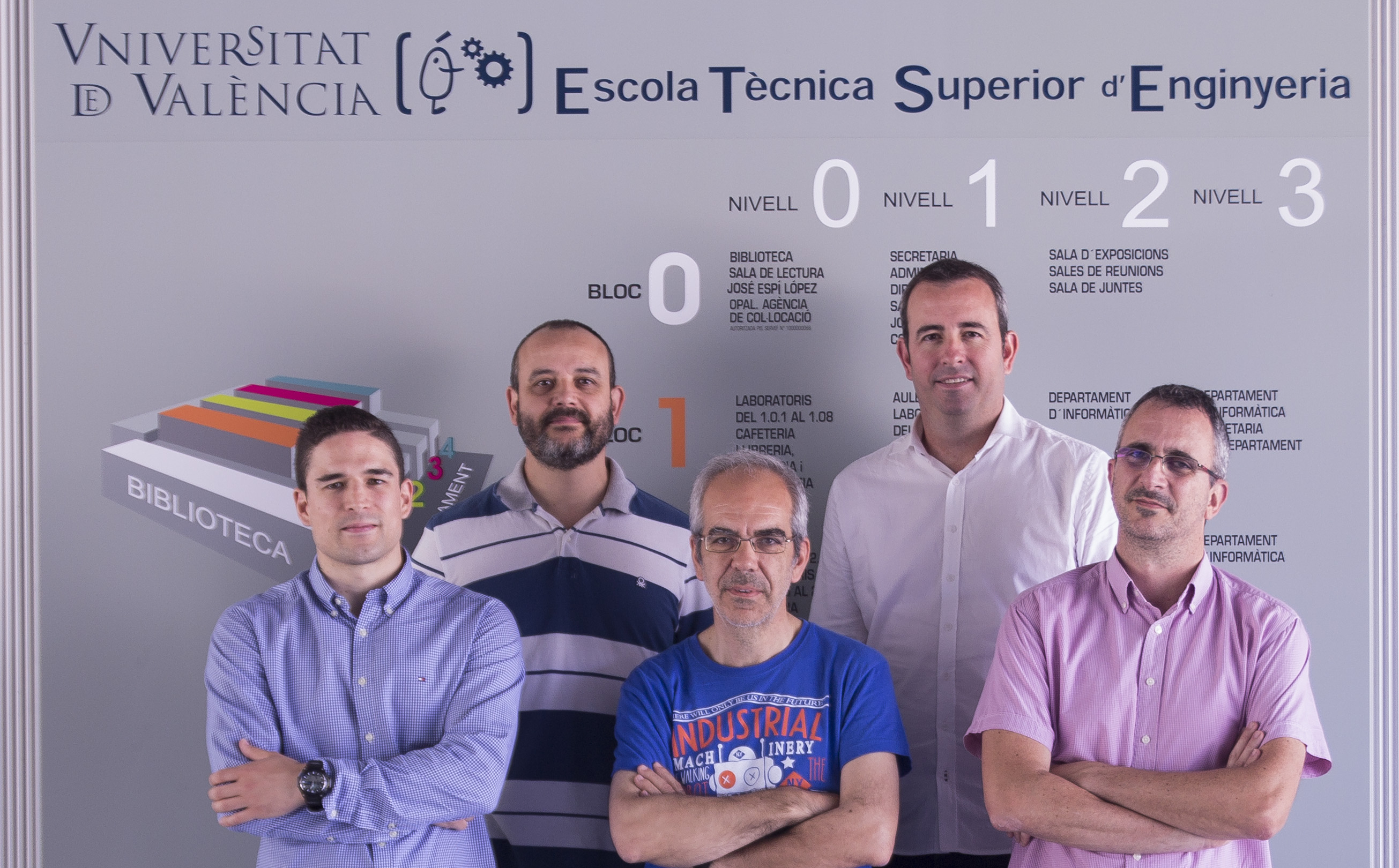
Researchers from the Universitat de València and from the Universitat Politècnica de València have proposed a method to get to know the thermal conductivity of the geological layers of the subsoil, locating the most efficient ones in transfer or absorption of heat. The application of the work in the design of exchangers for heat pumps, used in HVAC and domestic hot water, is able to save up to 70% of energy consumption in relation to conventional pumps.
The new methodology for locating geological layers with great capacity of heat absorption or heat transfer has been carried out from the experimental standard tests (TRT), extended with temperature measurements in different depths, made with an easy procedure and in known locations. Until now, the standard measurement methods of the capacity for extracting or injecting heat to the subsoil only allowed to obtain an average value of the environment in which the heat transfer was being carried out, being impossible to identify the most efficient areas.
‘This detailed knowledge is very important for the design of geothermal heat exchangers or connected to the ground, due to the fact that the usage of these data for its design can make the reduction of the installation costs, by making the most of the areas with more exchange capacity, reducing the periods for investment return and maximising energetic and economic savings’, has pointed out Nordin Aranzabal, researcher from the Department of Electronic Engineering of the Universitat de València.
‘The geothermal heat exchanges are used along with heat pumps for HVAC, proving savings up to 70% of electric energy in relation to conventional heat pumps. Moreover, approximately 40% of the consumption of energy in buildings is due to HVAC’, declared Aranzabal.
The researchers, belonging to the School of Engineering (ETSE) of the Universitat de València, also mentioned other advantages of the application of this method, such as the decrease of the impact on the buildings, since there is no need of heat exchangers with air nor cooling towers; the decrease of health hazards related to legionella and the reduction of carbon footprint.
The work in which five researchers from the Universitat de València from the Department of Electronic Engineering, and two researchers from the Universitat Politècnica de València, has been recently published in Applied Thermal Engineering.
It is worth highlighting that these kinds of facilities, which are usual in the cold countries of Europe and America due to its more rigorous climatic conditions, are very important for a sustainable energy use and, thanks to works like this one, is expanding more its use to regions with more temperate climates. Furthermore, these systems present very high efficiency rates and, for that reason, they receive the consideration of renewable energy.
The construction of the exchanger is restricted in less rigorous climatic areas, like the Mediterranean, in which other kinds of technologies can be more economical.
The verification of the lack of detailed data about the exchange heat process through the pipes buried in the subsoil and, for that reason, the impossibility of the exploitation of layers with a high level of humidity and water, is the factor that lead the researchers to develop tools for getting additional measures to characterise better the heat exchanges in drilling.
From the application of these measurement procedures on an experimental geothermal exchanger there were obtained data -temperature profiles a observer auxiliary pipe- which have allowed to adjust the subsoil thermal characteristics in a simulated model that reproduces the behaviour of the installation.
The simulations have used a 3D model of the exchanger, which, by means of the finite elements technique, has reproduced the behaviour of the data measured during what is known as Thermal Response Test or TRT, adjusting for that aim the capacity of heat exchange with the depth of the surrounding field.
Communications and Digital Systems Design Group (DSDC)
The Communications and Digital Systems Design Group (DSDC) of the of the Universitat de València is specialised in design and development of electronic systems, from specifications definition to pre-commercial prototyping. Founded in 1996, it originally developed electronic systems of high performances for the generation and processing of data coming from the European Laboratory for Nuclear Research (CERN) in Geneva (Switzerland).
Currently, its capabilities are developed in Nuclear Medicine, Home Automation, Power Efficiency, Ambient Intelligence and Radiation Detection. This way, it works in integrated digital systems; wireless communication technologies; high range digital design, or electronic developments based on microcontrollers. The DSDC is formed by 4 full-time professors and 4 doctorate students. The facilities of the group in the School of Engineering include two laboratories.
Nordin Aranzabal
Nordin Aranzabal is graduated in a Master’s Degree in Electronic Engineering (2013) in a Degree in Electronic Engineering for Telecommunications (2012) at the Universitat de València. He has taken part in research and development of hardware and software applications in the area of embedded systems, wireless communications and miniature designs of ultra-low consumption. Currently he is a doctorate student at the Department of Electronic Engineering and he has received an aid form the Commission of the European Union from the European programme: ‘CLIMATE KIC 2013: Advance strategies, methods and algorithms for optimal economical-technical sizing of a geothermal heat exchanger’ Additionally, he is the responsible of the projects of the IEEE University of Valencia Student Branch and one of its founding members.
Article:
N. Aranzabal, J. Martos, Á. Montero, L. Monreal, J. Soret, J. Torres, R. García-Olcina: Extraction of thermal characteristics of surrounding geological layers of a geothermal heat exchanger by 3D numerical simulations. Applied Thermal Engineering. Volume 99, 25 abril 2016. Pàg. 92–102.
Doi: http://dx.doi.org/10.1016/j.applthermaleng.2015.12.109
Last update: 20 de june de 2016 07:00.
Images:



















